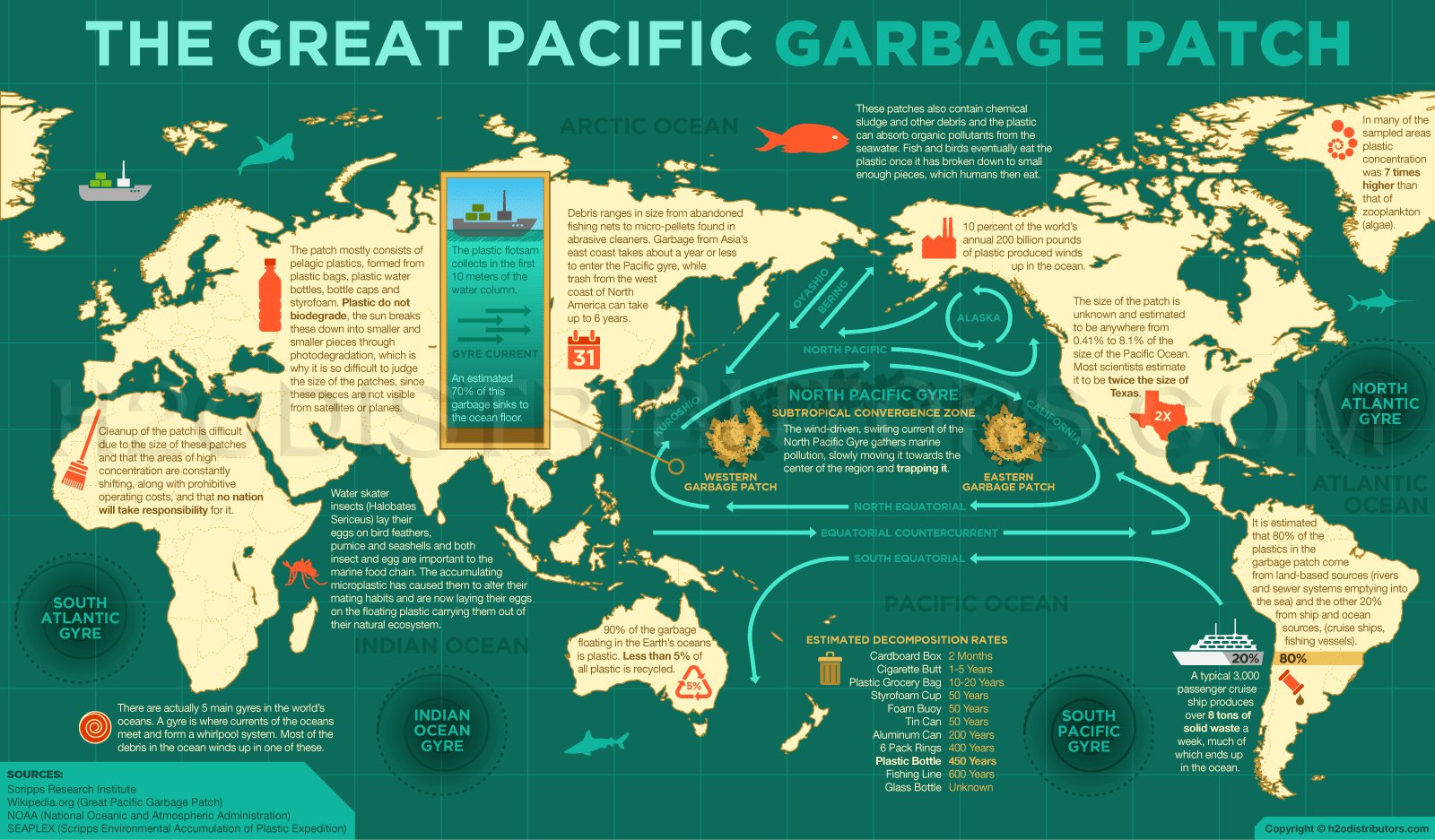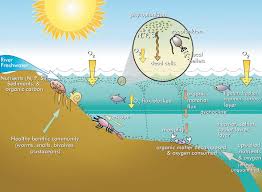Article: The 7 Biggest Threats to Our Ocean: Threat #6 The Garbage Patch

The 7 Biggest Threats to Our Ocean: Threat #6 The Garbage Patch
AKA “The Great Pacific Garbage Patch”. Great, as in big, not as in good. As the global population expands, so does the amount of trash we produce. Ever wonder where is all goes? A large portion of that trash unfortunately ends up in our ocean. While it may seem like an out of sight, out of mind scenario, quite the opposite is true. Once the trash meets the sea, it is swept up in the oceans currents, where it is then carried to distant areas as the currents diverge and come together. These collections of trash have become known as the trash islands.
One of the biggest, and more famous of these trash islands (yeah, there is more than just one, and this one is comparable to the size twice that of Texas) is located between Hawaii and the California coast in a location known as the North Pacific Subtropical Gyre. A gyre is a geographical term for a large system of rotating ocean currents, usually influenced by wind movements. They are caused by the Earth’s Coriolis Effect, and are often referred to as a swirling vortex within the sea, kind of like when you pull the drain in the bath tub and that funnel appears as all the water is sucked down the drain.
It is even estimated that this particular patch could be as large as the continental US, but it is hard to determine since most of its mass in below the surface of the water. In and around these trash islands, animals are getting tangled in nets, 6 pack rings, and choking on the plastic pieces that they mistake for food. At least 80% of the patch is composed of plastic.
 The major issue with plastic is that it does not biodegrade. Plastic will photodegrade, a process in which the plastic ultimately ends up breaking into countless tiny bits of little pieces called microplastics. This plastic, along with all the other trash, threatens sea life, aquatic ecosystems, fishing industries, and the safety of the human seafood supply. In the years since the first trash island was discovered in 1997, they have grown and multiplied dramatically.
The major issue with plastic is that it does not biodegrade. Plastic will photodegrade, a process in which the plastic ultimately ends up breaking into countless tiny bits of little pieces called microplastics. This plastic, along with all the other trash, threatens sea life, aquatic ecosystems, fishing industries, and the safety of the human seafood supply. In the years since the first trash island was discovered in 1997, they have grown and multiplied dramatically.
The seafloor beneath the Great Pacific Garbage Patch may also be an underwater trash heap. Oceanographers and ecologists recently discovered that about 70% of marine debris actually sinks to the bottom of the ocean.
(http://education.nationalgeographic.com/education/encyclopedia/great-pacific-garbage-patch/?ar_a=1)
Marine debris can be very harmful to marine life in the gyre. For instance, loggerhead sea turtles often mistake plastic bags for jellies, their favorite food. Albatrosses mistake plastic resin pellets for fish eggs and feed them to chicks, which die of starvation or ruptured organs. Seals and other marine mammals are especially at risk.
 They can get entangled in abandoned plastic fishing nets, which are being discarded more often because of their low cost. Seals and other mammals often drown in these forgotten nets—a phenomenon known as “ghost fishing.”
They can get entangled in abandoned plastic fishing nets, which are being discarded more often because of their low cost. Seals and other mammals often drown in these forgotten nets—a phenomenon known as “ghost fishing.”
Because the Great Pacific Garbage Patch is located so far from any country’s coastline, no nation has yet to step up and take responsibility and fund the cleanup of this mess. Charles Moore, the man who discovered the vortex, says cleaning up the garbage patch would “bankrupt any country” that tried it. Thankfully, other efforts are being made by individuals and international organizations, who are dedicated to preventing the island from getting any bigger.
We can all lend a hand in their efforts by doing little things that result in a positive impact. Just do as Jack Johnson sings and “Reduce, Reuse, Recycle.” Attempt to limit your use of disposable plastics by swapping them out with their biodegradable versions. Organizations such as the Plastic Pollution Coalition and the Plastic Oceans Foundation are using social media and direct action campaigns to support individuals, manufacturers, and businesses in their transition from toxic, disposable plastics to biodegradable or reusable materials.
Look for local organizations in your town that support like causes such as Heal the Bay in Santa Monica, The San Diego Coastkeeper or your local branch of the Surfrider Foundation. If we all are aware and do our share, we can help keep plastic out of the ocean.





Leave a comment
This site is protected by hCaptcha and the hCaptcha Privacy Policy and Terms of Service apply.